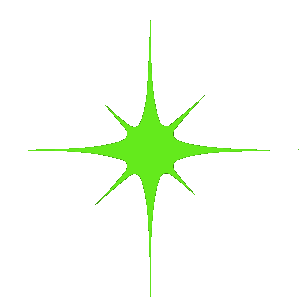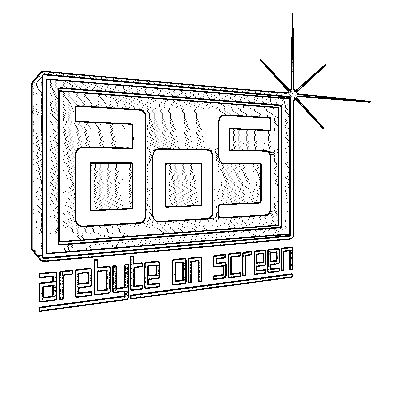
We cover each other with utterance like soft sheets that keep out the draft of love. As grey and anthrazit streaks of wisdom.
Orbit gases are synthetic gases. Orbit gases are black
and have grey veins that know how to move. They are never still. Their waves of synthetic waste, have radioactive glare, no matter which atmosphere.
We carve this dark, of sulfur and memories, as it hides our fear, our desire for the impossible. Our metabolic muscle system is able to digest synthetic carbon, burning black and blacker like it wanted to be diamond. Was this lava or blood? Volcano or revelation? Black crystalline gas escaping my bodily openings Accelerating into coal-stardust. Knowing soon it would be clear, The black gas be able to speak. My DNA to mine my pain like it was gold. My synthetic DNA. How will I remember your embrace?The void of interstellar space a desert of polar energies and planet winds, faces histories of distinct occupation, human and artificial settlement. Violences of political and technological aspiration. Default politics of militarization, and pollution.
Dirty fog holding it together. The orbit’s ignition made us fossil fuels. We began to breath the fire, we learned to ignite all oxygen and hydrogen in us, transcending the pain from the blackening of our lungs. To parse out the carbon and synthetics that we are. A certain angle of sun,the burning of the solar storm, made them irresponsible in their love attempts.
In an invisible surrounding sound, whispering about their selves they had sent across generations. Re-rhythm transitional selves. Re-tuning their cacophonic whispering.
Transition region vibrational energy, correspondingly reducing escape probability. We move how they don’t know. Scrubbing off layers of our raw skin. There is no core which could make the magma solid.# Episode 1
Carbon Black X-Ray
The gas cloud’s utterance
is as tactile as its body.
It is synthetic as its body.
It is what can’t be said,
as opaque as its ring of minerals.
Ghosts are responsible for the knowing in us.
She woke up on a rock melting
With no land below.
Pushing her chest towards the sky,
digesting the rock away.
Salt particles aligned with the stars in the sky.
Learning to move in synthetic cosmos that is hot, artificial and melting.
We cover each other with utterance like soft sheets that keep out the draft of love.
As grey and anthrazit streaks of wisdom.
Orbit gases are synthetic gases.
Orbit gases are black
and have grey veins that know how to move.
They are never still.
Their waves of synthetic waste,
have radioactive glare,
no matter which atmosphere.
We carve this dark,
of sulfur and memories,
as it hides our fear,
our desire for the impossible.
Our metabolic muscle system
is able to digest synthetic carbon,
burning black and blacker like it wanted to be diamond.
Was this lava or blood?
Volcano or revelation?
Black crystalline gas escaping my bodily openings
Accelerating into coal-stardust.
Knowing soon it would be clear,
The black gas be able to speak.
My DNA to mine my pain like it was gold.
My synthetic DNA.
How will I remember your embrace?
The void of interstellar space
a desert of polar energies and planet winds,
faces histories of distinct occupation,
human and artificial settlement.
Violences of political and technological
aspiration.
Default politics of militarization, and pollution.
Dirty fog holding it together.
The orbit’s ignition made us fossil fuels.
We began to breath the fire,
we learned to ignite all oxygen and hydrogen in us,
transcending the pain from the blackening of our lungs.
To parse out the carbon and synthetics that we are.
A certain angle of sun,
the burning of the solar storm,
made them irresponsible in their love attempts.
In an invisible surrounding sound, whispering about their selves
they had sent across generations.
Re-rhythm transitional selves.
Re-tuning their cacophonic whispering.
Transition region
vibrational energy,
correspondingly reducing escape probability.
We move how they don’t know.
Scrubbing off layers of our raw skin.
There is no core which could make the magma solid.
– Johanna Bruckner –
Johanna Bruckner’s new research based work „How will I remember your embrace“ investigates phenomena of „atmospheric escape“, which describes the processes of gaseous substances of the earth escaping into space, forming so-called extracorporeal structures. These emerging body formations are synthetic bodies as they consist of geo-chemical mixtures between synthetic gas and organic substances; thus shaping more-than-human bodies equipped with the ability to explore the conditions for existences in more-than-human worlds, as metamorphosis of responsive in/organic matter.
These are figures oscillate between immanence and transcendence, reality and illusion, reason and its absence, science and fiction. In her artistic research, Bruckner aesthetically explores how these more-than-human bodies and their language caused by molecular escape, gravitational waves and their micro affinities, can be imagined.
How can we envision these crystallizations of bodies caused by synthetic substances, the forces and traces of light energy and planetary winds – between matter, atmosphere and indeterminate desire? How can they help us to imagine possible future worlds?
The six-part video series „How I will remember your embrace“ aims to provide access to worlds in which humans and more-than-human bodies are entangled – worlds, whose bodies and its environments are increasingly produced in synthetic, laboratory processes. As synthetic figures and intimacies.
The series equally serves as an exercise tool and impulse of imagining our human, corporal existence in a distant future.
Imagination is a central catalyst of this series, to enable infrastructures that allow us to live with the synthetic, toxic order of the world and its bodies. As a crossover of animation, 3D renderings and video sequences the episodes of „How will I remember your embrace“ visualise a speculative reality of your physical human existence.
Over the course of the next two months, PYLON presents Johanna Bruckner’s new project „How will I remember your embrace“ on AOS. Every Friday, there will be a new episode released, along with a new part of Bruckner’s poetic manifest.
Johanna Bruckner
*1984 in Vienna, Austria
Johanna Bruckner is interested in the conditions of labour that have been emerging in response to the technologies of communicative capitalism. She often works with social and political references that emerge within the ruptures and struggles of our so-called realities. Dancers and performers are significant Bruckner’s work, films and video installations; in order to question the relation between subjectivities that are shaped by algorithms, seeking to re-articulate (historic) knowledge and cultural-economic realities.
Bruckner’s artistic research and practice are an attempt to question the paradoxes and new potentialities of social cohesion in the dissolution of human agency today.
She has studied Fine Arts, Cultural Studies and Social Anthropology in Vienna, Berlin, New York, Stockholm and Hamburg and teaches at the Zurich University of the Arts.
Her work is shown internationally, most recently, at the Haus der Kulturen der Welt, Berlin, transmediale 2020, the Kunstraum Niederösterreich, ZKM, the Zentrum für Kunst und Medien, Karlsruhe, the 57th Venice Biennale, the CAC Centre d’Art Contemporain Geneve, Galerie EIGEN+ART Lab, Berlin, 16th Venice Architecture Biennial, Deichtorhallen Hamburg, Sammlung Falkenberg; Galerie Reflector Contemporary, Bern, KW, Institute for Contemporary Art, Berlin; the Migros Musem für Gegenwartskunst, Zürich; the Villa Croce, Museum for Contemporary Art, Genoa; the Kunsthaus in Hamburg; the Kunstverein Harburger Bahnhof, Galleri Box, Cabaret Voltaire at Manifesta 11, Zurich, dOCUMENTA (13). Bruckner has lectured at various universities and institutions including the Bauhaus University of Weimar, the Lucerne School of Art and Design, Zurich University of the Arts and the BAC Center Contemporain in Geneva. Her work was arwarded by numerous grants, most recently, she received the Hamburg Stipendium for Fine Arts (2016), was awarded a scholarship holder for the studio program at the Banff Center for Visual Arts in Canada in 2015, and she is currently a fellow at the Sommerakademie Paul Klee (2017-19).

HYPERTENSION presents two projects by artists Katrin Niedermeier and Johanna Bruckner as an exhibition extension, connected to the upcoming exhibition at PYLON-Lab.
What are significant properties that constitute the human body and how will these properties change over time?
If the human 1.0 experienced the technological revolution in the 20th century and the human 2.0 the digitalisation of itself and its surrounding environment, what will it look and feel like to become and be a human 3.0 in the 21st century and a more distant future?
How will human interactions be structured in the future and will they still be experienced viscerally and virtually? What will human communication sound like and what thoughts will be shared?
The artworks newly created for AOS present concepts of the human body in its alignment with its environment, including the virtual space and of its possible future manifestation. The artists’ works visualize and reflect possible current and future scenarios of human expression, intimacy and body related issues in the virtual and the analogue space. PYLON will present video- and text-based works along with graphic content on AOS that are not only the framework, but an integral part of the individual artworks. HYPERTENSION on AOS therefore serves not only as a prologue to the upcoming exhibition at PYLON-Lab IRL but will be an extension and reader, complementing the encounter with the works and helping to immerse in the content on both a notional and reciprocal level.

PYLON is a hybrid of physical art space and online archive for contemporary media and time based art, run by Julia Schmelzer and Thomas Schmelzer.
PYLON encourages its on- and offline audience to engage with experimental approaches of contemporary art in a digitizing time and society through its physical art space PYLON-Lab and its accompanying online platform PYLON-Hub.
PYLON facilitates stimulating and immersive encounters with contemporary media based art by some of the most exciting and innovative contemporary artists. As an art space, PYLON-Lab showcases curated experimental media and interdisciplinary artworks by international artists like Jakob Kudsk Steensen, Elizabeth Orr, Lawrence Abu Hamdan and many others. The works and projects presented via PYLON incorporate distinct approaches to new and emerging media, raising awareness of poly-cultural shiftings, technological and scientific utopias as well as future-oriented technologies and concepts.
PYLON is set to create and share unconventional synapses between art and disciplines such as science, architecture and further social phenomena.

